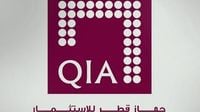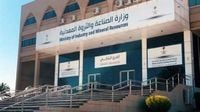Algeria and Saudi Arabia, two nations often associated with their vast deserts and oil wealth, are making headlines for reasons that extend far beyond their traditional identities. In recent weeks, both countries have found themselves at the crossroads of tourism and mining, each unveiling opportunities and ambitions that could reshape their economic and cultural landscapes.
On September 16, 2025, travel writer Chris Leadbeater shared his awe for Algeria with the world, tweeting about his recent journey: "I can think of few countries that have enthralled me quite as much in my recent travels. Some musings on the (many) wonders of #Algeria for @TelegraphTravel." His enthusiasm echoed a broader sentiment captured in a Telegraph report published just two days later, which described Algeria as a “treasure trove” for explorers and a destination brimming with untapped wonders.
What exactly makes Algeria so enchanting? According to Telegraph, it’s a place where the Mediterranean meets the Sahara, where ancient cities and Roman ruins stand as silent witnesses to a tumultuous history, and where the coastline stretches over 1,000 miles—offering some of the most beautiful beaches in the Mediterranean. The report paints Algeria as a land of contrasts, from the bustling streets of Algiers’ ancient Casbah to the windswept dunes of the southern desert, which alone accounts for 80 percent of the country’s nearly one million square miles—making it the tenth largest nation in the world and the largest in Africa.
Algeria’s historical tapestry is as rich as its landscapes. The core of the Casbah in the capital dates back to the tenth century, its cobblestone alleys and sloping streets bearing the marks of medieval times. The city’s Grande Poste, a remnant of more than a century under French colonial rule (1830–1962), stands as a symbol of architectural fusion, blending French and Arab styles in its elegant facade and deep arches. Even the wide boulevards, reminiscent of Paris’ Haussmannian avenues, hint at the city’s layered past.
But history in Algeria is not just about colonial echoes. The Telegraph highlights the Martyrs’ Memorial—a 91-meter-tall concrete monument perched atop a prominent hill, visible from nearly every corner of Algiers. The museum beneath it chronicles the brutality of French rule and the relentless struggle for independence between 1954 and 1962, a period that still shapes Algerian identity today.
For those drawn to antiquity, Algeria offers a veritable feast. Roman ruins dot the landscape in places like Tipasa, Constantine, and Djemila, providing visitors with a tangible link to the ancient world. The Sahara itself is home to more than 80 archaeological sites, making it a dream for history buffs and adventure seekers alike. Ghardaia, with its unique desert architecture and cultural traditions, stands out as another must-see destination.
Then there’s the desert—an expanse that defies easy description. In Timimoun, the old forts, relentless sun, and spectacular sunsets draw desert lovers from around the globe. As the Telegraph notes, Algeria is “a source of magic for exploration enthusiasts,” its remote southern borders brushing against Mauritania, Mali, and Niger, and offering a sense of endless possibility.
While Algeria dazzles with its natural and historical riches, Saudi Arabia is making waves in a different arena. On September 18, 2025, the Saudi Ministry of Industry and Mineral Resources announced the results of a hotly contested series of mining tenders in the Nabitah-Dawhy zone. This multi-round public auction saw four major alliances and several individual companies secure exploration permits covering 25 mining sites, with total financial commitments exceeding 156 million Riyals—a testament to the growing allure of the kingdom’s mining sector.
The list of winners reads like a who’s who of the global mining industry. According to the Ministry, alliances such as Hancock Prospecting Midana Exploration Pty Ltd with Ma’aden, Shandong Gold Group with Ajlan & Bros Mining, Technology Experts with Andiamo Exploration Ltd, and cEwen Inc with Somo company all walked away with significant contracts. Other notable participants included Batn Al Ard for Gold, Aurum Global Group, Al Masar for Minerals, Saudi Gold Refinery, and the Unique Coalition for Mining. This diversity of local and international players underscores the sector’s appeal and the government’s commitment to fostering competition and transparency.
The awarded projects span a range of minerals—gold, silver, copper, and more—reflecting Saudi Arabia’s ambition to diversify its resource base. The Ministry isn’t stopping here. It has announced plans to award ten additional permits in the Nabitah-Dawhy zone between September 16 and 18, 2025, with final results pending completion of regulatory procedures. Notably, the tender for site ND26 was halted after bids exceeded technical and financial expectations; it will be reissued under stricter criteria to ensure fairness and protect investor interests.
Looking ahead, Saudi Arabia is preparing to launch new competitions for 162 mining sites in the Nuqrah and Sukhaybarat Safra belts in the Medina region starting September 28, 2025. The Ministry’s broader strategy is ambitious—offering more than 50,000 square kilometers of mineral belts for exploration within the year. This move aims to expand the investment base, increase exploration spending, and attract both domestic and foreign investors.
Saudi officials see mining as a pillar of the kingdom’s Vision 2030 economic transformation plan. By boosting transparency, encouraging international capital, and empowering local companies, the Ministry hopes to build a diversified and sustainable economy that supports comprehensive development. As the Ministry put it, "These projects not only reflect the scale of natural resources possessed by the Kingdom, but also demonstrate a clear direction towards building a diversified and sustainable economy that supports comprehensive development."
Both Algeria and Saudi Arabia are, in their own ways, opening their doors to the world—Algeria by inviting travelers to discover its hidden gems, and Saudi Arabia by positioning itself as a global mining powerhouse. For Algeria, the challenge lies in translating its natural and historical wealth into sustainable tourism that benefits local communities while preserving its unique character. For Saudi Arabia, the question is whether its mining boom can deliver on the promise of economic diversification without compromising environmental or social standards.
As these nations chart new courses, their stories remind us that even the most familiar places can surprise us—with a little openness, ambition, and a willingness to explore the unknown.





